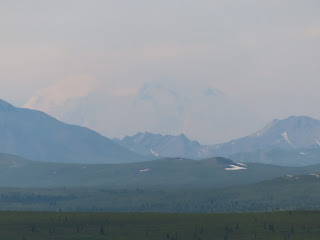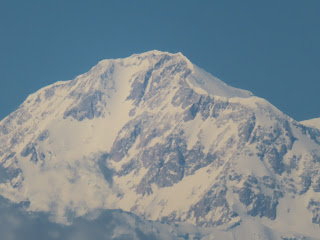We had heard that the scenery around Seward, Alaska is spectacular. Deep fjords support a coastal area rich in wildlife and beauty. Huge glaciers from the nearby Harding Icefield carve out valleys between the mountains. Lush green forests claim the rocky terrain left by retreating glaciers. Musical waterfalls flow down the mountainsides as the melting snow makes its journey to the Gulf of Alaska.
Kenai Fjords National Park, located near Seward, deserves much of the credit for the area's beauty. Its dynamic ecosystems of ...
Kenai Fjords National Park is one of only three of Alaska's eight national parks that it is actually possible to drive to. The other five are in such remote and protected areas that visitors need to arrive by boat or plane. We took advantage of seeing Kenai Fjord's icy beauty by hiking the trails near Exit Glacier and taking a boat cruise out of Seward.
Exit Glacier
Exit Glacier got its name in 1968 when the first mountaineering group to successfully cross the Harding Icefield ''exited'' the ice field from this glacier. It is one of 35 glaciers that flow from this huge ice field and the only one in Kenai Fjords National Park that is accessible by road. From the Visitor's Center, it is an easy one mile hike to some great views of Exit Glacier. It is also possible to walk along the glacier's rocky washout area that is formed as the glacial ice continues to melt and retreat.
For more of a challenge, it's possible to hike up a trail for an up-close view of the Exit Glacier and the Harding Icefield above it. This 8.2 mile (round trip) hike includes a 3800 feet vertical climb and is described as a challenging yet very rewarding experience.
...we ran short on time and were only able to make it half way to the glacier overlook at Marmot Meadows.
Yes, this trail is a pretty relentless uphill climb, so we realized that besides needing more time, our next attempt would also have to include more water and snacks.
Partly cloudy skies greeted us on the morning of our second attempt.
When we reached our previous turn-around spot, we hoped that we would have what it would take to ...
across the boulder fields,
At that point I checked, and I was quite relieved to find out that glacial rappelling is not one of Doug's bucket list items!
Kenai Fjords Boat Tour
Because much of Kenai Fjords National Park is nestled between mountains and the ocean, one of the best ways to discover the beauty of this seaside paradise is by a boat tour. Several local companies offer wildlife and glacier viewing cruises, and we were grateful to have a mostly sunny day to enjoy the beauty of the area where the mountains, ice, and ocean meet.
The naturalist on board filled us in on the science and history of this national park's glaciers and inhabitants. Over 190 species of birds can be found on the rocky cliffs of the fjords ...
including one of my favorites, the puffin!
She described the different types of glaciers that can be found in the park and how the ''health'' of these glaciers reflects the ''health'' of our planet.
Bear Glacier is a hanging glacier that is nestled high in the mountains. Despite its high and cold surroundings, its rate of retreat continues to increase each year.
Aialik Glacier is an example of a tidewater glacier in that its terminus flows into the ocean. Its loss of mass is visualized when chunks of ice break off the face of the glacier and float in the water. This process is called calving and while its pretty amazing to be able to get close enough to see the calving of the glacier, it also means that these icy giants are continuing to disappear.
By the time we heard the sound of the crashing ice, bits of the glacier had already fallen into the ocean. See if you can tell what section of the glacier calved in the following short clip.
Our guide also told us about the number of whales who call the waters of Alaska ''home'' for the summer including humpbacks, belugas, and orcas.
We were quite intrigued by how apparently unconcerned these stellar sea lions were with the pod of orcas hunting close to their shoreline hangout.
for all to enjoy!























.JPG)




.jpg)
.jpg)
.jpg)








































